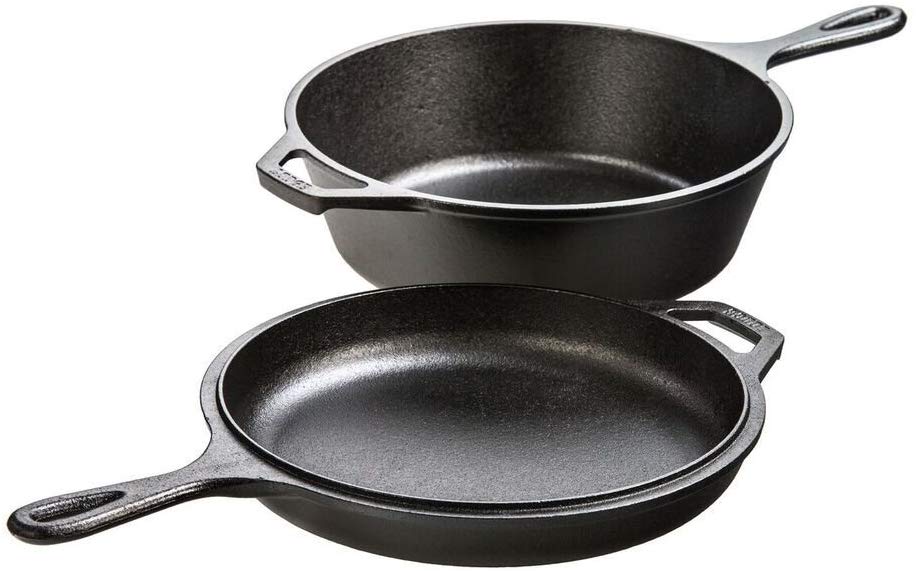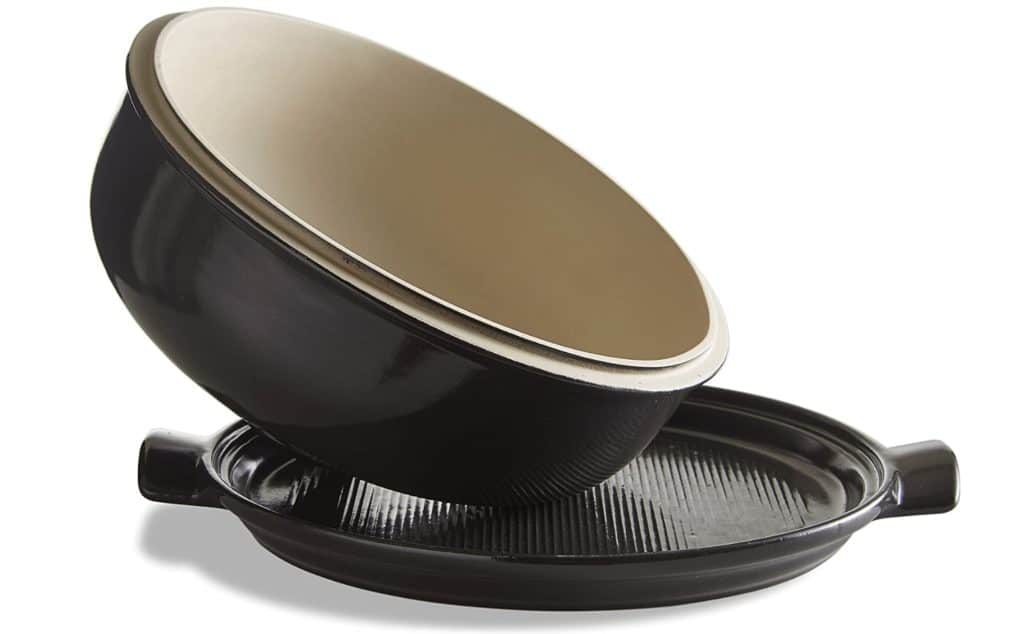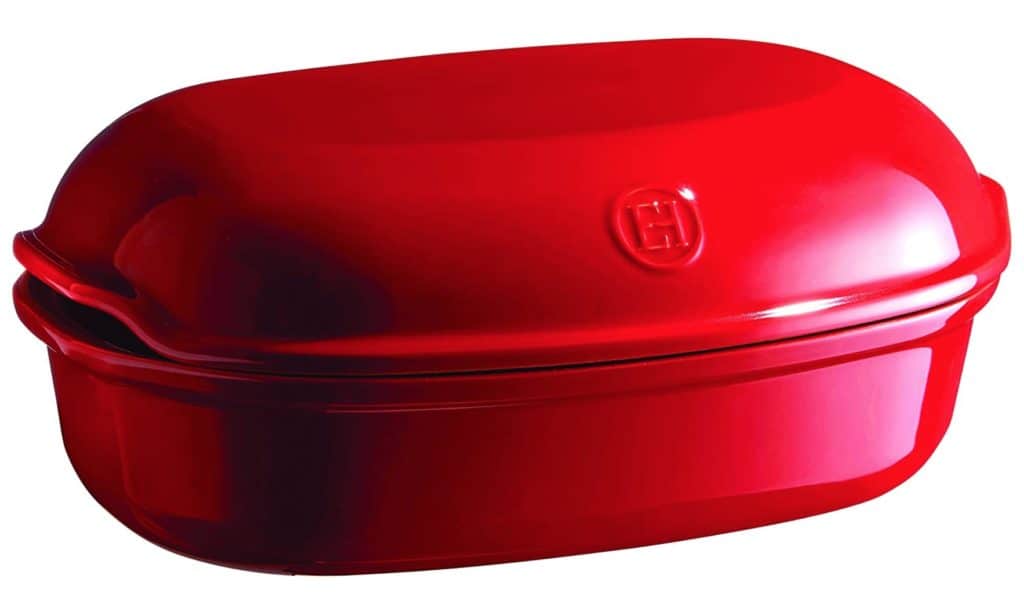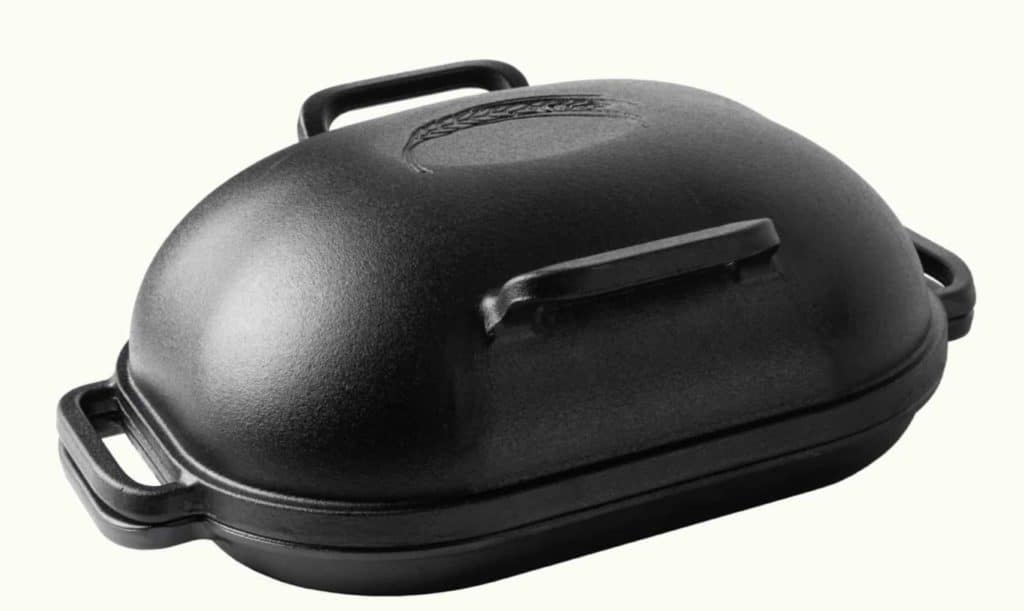Making bread — sourdough or otherwise — at home is a great hobby and one that yields delicious results. One of the big challenges of home bread baking though is that we all lack professional baking ovens. You can compensate for this with the correct baking vessel.
What To Look For In A Bread Baking Vessel
Baking bread is simple, but it’s tough on your equipment. Here are the features to look for in your pot, pan, cooker, or cloche…
- High temperature – Bread is often baked at 450 degree F and more, so you need something that can withstand the heat.
- Low sides – Bread is put into a hot container and dropping a loaf of uncooked bread dough into a 500-degree container with high sides is challenging and can lead to unpleasant burns your hands. Low or open sides to your vessel is preferable, but not mandatory
- Lid – Professional bread baking ovens inject steam into the often to create a firm, hard crust. Home ovens don’t have this, so the bread is cooked inside a close vessel and it essentially steams itself as the bread releases the moisture inside as it cookes
- Not too expensive – Your beautiful new 6 qt. Le Creuset dutch oven is great for cooking bread inside, but the 500-degree heat can create some nasty stains on the light enamel interior. This means that while the Le Creuset is capable of cooking bread inside, it may not be worth the risk.

Lodge Combo Cooker
One of the most popular tools for baking bread at home is the Lodge Combo Cooker. This is an indestructible 10.25-inch across, 3 quart cast iron pot and skillet combination that is great for cooking smaller loaves of bread.
T strengths of the combo cooker are the sub-$40 price, the extremely tough nature of the uncoated cast iron, and the general versatility of the cooker. Weaknesses include the small side, the heavy weight of the pair (over 10 pounds), and that it’s not just not a very attractive set so keeping it out on the range just isn’t going to be appealing for a lot of people.
Also, while you do get a pot and skillet, it’s not a great skillet compared so something like the Lodge classic skillet or Blacklock skillet, so the overall usefulness outside of baking is limited.
Lodge Cast Iron Dutch Oven
Lodge’s 5 qt. cast iron dutch oven is a great alternative to the combo cooker, and it’s actually better in a number of ways. The only downside is that the dutch oven has a lid, not a skillet, so you can’t use the top of frying your eggs in the morning. Past this the dutch oven is better than the combo cooker for making bread.
The dutch oven is better for bread because the 5 quart size means you can make a nice, large 1 kg loaf of bread with no problems, where the 3.2 quart size of the cooker is only good for smaller loaves. This is important for getting a great oven pop from the bread and seeing some nice growth and air bubbles inside. The dutch oven’s lid is also a lot lighter and easier to maneuver than the skillet, which actually weighs over 5 pounds.
Lastly, a dutch oven a useful shape for cooking beans and making soups, etc. and the 5 quart size is quite handy where 3 quart is too small for, say, a pound of beans.

Enamel-coated Dutch Oven
If you want something fancier and prettier, but also better for general cooking, then you can opt for an enamel-coated dutch oven. Whether you opt for a Le Creuset, Lodge, Staub, or any of a number of other brands, you will get a vessel that is ideally suited to baking bread within.
On the upside, enamel-coated cast iron is great for general cooking as it’s easy to clean and doesn’t absorb flavors. It’s naturally non-stick (to some extent) and is loved by cooks the world over. These dutch ovens come in amazing colors and look great on your range.
There are downsides too. Enamel can be fickle and it doesn’t like temperature shocks — like extreme hot to cold or vice versa. Enamel can also stain, especially when it’s a lighter color on the inside, like Le Creuset, which happens all the time when cooking dry. Also enameled cast iron often has plastic handles which are only good to 450 degrees F, or so, so you might need to swap the included handle for a metal one before you raise the dial too far.

Emile Henry Bread Cloche
One of the most attractive options for bread baking is the Emile Henry Bread Cloche. A cloche is a ceramic vessel with a flat bottom and a large, voluminous lid. This is ideal for baking bread because it seals steam in exceptionally well and it’s quite easy to get the bread in and out of when the cloche is hot.
The ceramic of the cloche is good until 515 degrees F, so temperature is not a problem. And at 11″ in diameter and 7″ tall you have enough space for a nicely sized loaf of bread.
A cloche is a bit fragile because it’s ceramic and it’s somewhat unwieldy to store given the shape, which can’t be stacked, but it’s still a wonderful, classic baking tool.

If you want something a bit more conventional, Emile Henry sells the ceramic Bread Baker but it’s built for long, low loaves, not a miche or boule shape.

Challenger Bread Pan
The Challenger Bread Pan is a newer solution to the problem of cooking bread at home. Designed by and for home baking enthusiasts, the Challenge is a large cast iron bread pan that weights an impressive 22 pounds and is covered in handles or easy handling.
The pan measures in at 15.4″ long by 10.5″ wide and 5.4″ tall, so you can get a full-sized loaf of bread in a professional baking-like environment, all from your home.
The Challenger is highly regarded and well-reviewed but with a $295 retail price (about $225 street price) it’s a serious investment. And while it’s an ideal tool for baking bread at home, it’s not without it’s downsides — this is basically a single-use tool, it’s quite expensive, and the huge weight means it take a long time to get up to temperature (expect an hour of pre-heating).
On the plus side, the Challenger is large enough for about any loaf, it retains heat extremely well, and it has low sides that are easy to get bread inside of, so long as you can maneuver the 16-pound lid without any problems.
Of course the Challenger is cool to look at and incredibly durable because of the fully cast iron build so this is something you’ll be buying for life.
Our Pick?
Unless something really pops out to you as being the best possible solution for your home, I’d recommend the Lodge Cast Iron Dutch Oven. It’s versatile, affordable, and it’ll last forever. I’ve been using one for over 2 years now and it’s replaced both as large Le Creuset and a Lodge Combo Cooker as my sourdough baking pan of choice.

